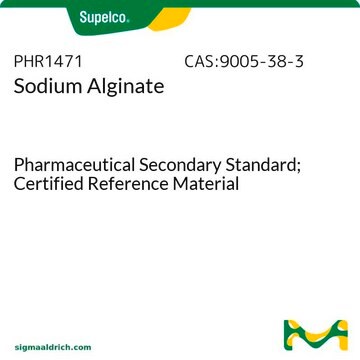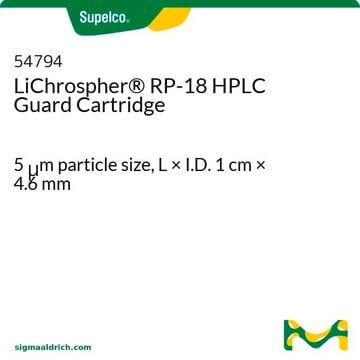The viscosity is not determined for this product on a lot specific basis. However, the viscosity is generally between 100 - 200 mPa sec for a 1% solution at 20°C. Please note that the viscosity is not a listed test specification and has not been validated.
71238
Alginic acid sodium salt from brown algae
BioReagent, suitable for immobilization of micro-organisms
Synonym(s):
Algin, Sodium alginate
Select a Size
About This Item
Recommended Products
biological source
algae (brown)
Quality Level
product line
BioReagent
form
powder
ign. residue
≤30%
loss
≤15% loss on drying
color
white to light beige
pH
6.0-8.0 (10 mg/mL in H2O)
suitability
in accordance for gelation test
suitable for immobilization of micro-organisms
storage temp.
room temp
SMILES string
[Na+].[O-]C(=O)C1O[C@H]([C@H]([C@H]([C@@H]1O)O)O)O
InChI
1S/C6H10O7.Na/c7-1-2(8)4(5(10)11)13-6(12)3(1)9;/h1-4,6-9,12H,(H,10,11);/q;+1/p-1/t1-,2-,3-,4?,6+;/m0./s1
InChI key
MSXHSNHNTORCAW-MPGIDXPLSA-M
Looking for similar products? Visit Product Comparison Guide
Application
Other Notes
Storage Class Code
11 - Combustible Solids
WGK
WGK 1
Flash Point(F)
Not applicable
Flash Point(C)
Not applicable
Personal Protective Equipment
Choose from one of the most recent versions:
Already Own This Product?
Find documentation for the products that you have recently purchased in the Document Library.
-
What is the viscosity of the alginate?
1 answer-
Helpful?
-
-
What is the viscosity of this product?
1 answer-
The viscosity of product is not tested on a lot specific basis, however historical values indicate a range of 100 - 200 cP at 1% in water, 20 °C.
Helpful?
-
-
WHAT IS THE MANNURONIC ACID TO GULURONIC ACID (M/G) RATIO OF THIS PRODUCT (71238)?
1 answer-
The guluronic acid content in this product is approximately 70 % and the mannuronic acid content is approximately 30 %
Helpful?
-
-
What is the average molecular weight?
1 answer-
The molecular weight is approx. 100,000 - 200,000 g/moL.
Helpful?
-
Active Filters
Our team of scientists has experience in all areas of research including Life Science, Material Science, Chemical Synthesis, Chromatography, Analytical and many others.
Contact Technical Service






